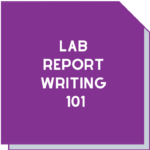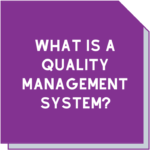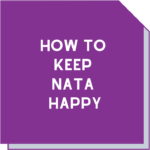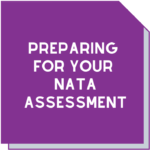Protecting your lab from today’s bandits
written by Maree Stuart
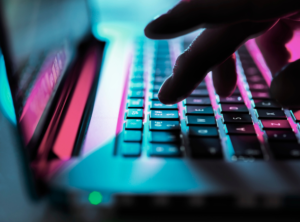 You might remember the famous case where David Bowie and Queen took Vanilla Ice (or Robert Van Winkle as he is legally known) to court for copyright infringement of their song ‘Under Pressure’.
You might remember the famous case where David Bowie and Queen took Vanilla Ice (or Robert Van Winkle as he is legally known) to court for copyright infringement of their song ‘Under Pressure’.
Van Winkle had quite clearly sampled the classic bassline to Under Pressure. However, he famously insisted that the two melodies were different because he added a beat between notes. Van Winkle settled for an undisclosed but inevitably hefty sum and Bowie and Queen received song writing credits for the early 90s Pop Rap ‘hit’ (admittedly that last description depends on your taste in music!).
What do these musical giants have to do with labs, you might ask? Well, when it comes to the issue of stealing someone’s intellectual property, there is quite a lot! Even ‘sampling’ from the original can cause problems.
A growing problem
Over the past couple of years, many of our lab contacts have experienced fraud or misuse of their reports. Ranging from labs testing consumer products, construction materials, agricultural products, and environmental samples, it seems there is quite the industry in fabrication of reports. Some would say it’s a growing industry.
The number of counterfeited products in 2019 was estimated at 3.3% internationally or approximately USD 509 billion. The effects of fake test reports is not only expensive but can have an adverse reputational impact on labs involved in the testing, inspection, and certification industry.
So, what forms of unscrupulous behaviour have labs been subjected to and what can labs do to protect themselves?
Consumer beware
Consumer products are an easy target. Laboratories perform so much of the supporting work to ensure consumer safety and efficacy of the products we touch and use every day. Sometimes the testing determines the price of commodities used in consumer products. Not only are there safety considerations, but also economic ones.
We’ve seen clients in the consumer product testing space receive doctored versions of reports purported to be issued by them. In some cases, spotting the fraud is easy. For example, when a test is done to a standard and the attributes of the product in the report don’t match those listed in the standard.
Then there are the more difficult cases when the reports are tampered with to give results that improve the economic bargain for the seller or hide a breach of an environmental pollution licence. And in many cases, the reports are issued as hard copies or PDFs. Not an editable Word document is in sight!
What more can a poor lab do?
Apologies to Split Enz for borrowing their line…
The first thing to do is to run this through your risk management system. Fraud is a real risk in this day and age!
This will help you identify how big a problem this could be and therefore what priority you should place on preventing misuse of your reports.
Then it is a matter of determining what actions you will take if anything at all. You might, after all, be ahead of the game and have this all sorted. But if not…
Technological solutions
There are a few things you can do with current technology.
Remember when your hard copy report was totally secure? That was like, NEVER! Since the dawning of the quill and ink, fraudsters have been copying and misrepresenting the original word. The invention of the typewriter and then the photocopier made this all so much easier. Not to mention the now ubiquitous correction fluid.
Firstly, if you are sending out editable version of reports to clients, stop NOW! PDF technology is readily available for free, and you can secure your documents against unauthorised access and modification.
As we mentioned above, sometimes this is not enough. Just like thieves of old with correction tape on typewriters, the more unscrupulous, tech-savvy bandits know the tricks to break into things like PDFs – there are even YouTube videos explaining how to do it! At this point, you might sigh and repeat, what more can a poor lab do?
 Well, there is more robust tech that you can use.
Well, there is more robust tech that you can use.
Blockchain technology is not just for cryptocurrency.
Nonfungible tokens (NFT) are another form of application of this technology. These are normally thought of as ways to own the rights to digital art.
Since the blockchain prevents data from existing in two places, putting an NFT on the blockchain guarantees that only a single copy of a piece of digital art exists. In fact, anything that is remotely unique could be an NFT. And before you ask, yes you can create your own NFT in your own lab!
Increasingly, supply chains and logistics make use of blockchain technology. It provides improved communication between partners since data is available on a secure public ledger. And since you can’t alter data on the blockchain, this improves data integrity and minimises fraud.
Why not start a conversation with your customers and regulators about where technology can improve communication of data?
The legal way to protect your reports from fraud
In Australia, works such as reports are protected by copyright as literary work. Provided there is a sufficient ‘point of attachment’, this automatically happens. These points of attachment essentially involve:
- a ‘personal’ criterion based on the nationality or residency of the author or maker; or
- a ‘territorial’ criterion based on the place of publication or making of the work.
In the first case, if the author is an Australian citizen or a permanent resident of Australia, then the personal criterion is satisfied. If the person making the report is in Australia for a special or temporary purpose, then the work is not automatically covered by copyright protections.
In the case of a territorial claim of copyright protection, if the report is first published in Australia, then it is protected.
You do not need to register for copyright to be protected, nor do you need to include the copyright symbol © for these protections to come into effect.
How can my legitimate clients use my lab’s report in their work?
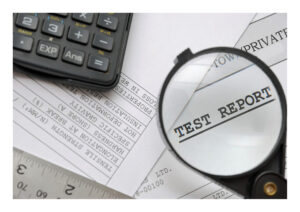 That’s easy! You have assigned the right to copy your lab’s work into their own. Those magic words that many labs place in their reports ‘This report shall not be reproduced except in full’ give some added legal protection. They tell the holder exactly what they can and can’t do with the report and its contents.
That’s easy! You have assigned the right to copy your lab’s work into their own. Those magic words that many labs place in their reports ‘This report shall not be reproduced except in full’ give some added legal protection. They tell the holder exactly what they can and can’t do with the report and its contents.
If you don’t include this kind of statement in your report, then you are permitting the client to use only part of the information contained in the report.
Which situation is better for your lab’s reputation?
What if my copyright has been infringed?
There are a few things you can do if you find your report has been misused.
You can approach a person infringing copyright to seek redress, asking them to withdraw the reports. That’s of course if you have their contact details.
If your reports are used in a regulatory framework, like consumer safety or environmental protection, you can also contact the regulators. Most regulators have a contact on their website for alerting them to fraud and other questions of compliance.
If you are the litigious type, you could seek an injunction or damages. But with many things legal, the economic and mental cost of this route could be far more than any satisfaction you might derive from having your day in court.
If the acts are especially egregious, law enforcement organisations and in some cases, regulators, can pursue criminal offences. Sometimes it is a good idea to hand any evidence over to your local police for investigation.
Should I tell my accreditation body?
This is a tough one. If the report carries the endorsement of your accreditation body, then their copyright is also infringed. But you might worry about what action the accreditation body will take against your lab. Will they demand you withdraw the reports causing reputational damage to your lab?
Yes, they could, but the basis for demanding you withdraw a perfectly compliant report which contains your intellectual property could be construed as inequitable.
The accreditation body may want to determine what you are doing in terms of the (now) identified risk. That’s fair enough. But they cannot demand you implement a costly solution that does not balance the real risk, which may be relatively low. So go back to your risk management system and work through the problem first.
“I’m fully confident that copyright…will no longer exist in 10 years” David Bowie, 2002
Finally, we’re glad that the prediction of David Bowie in 2002 hasn’t come true. It’s meant that there are some ways to protect one of your lab’s most important intangible property, the contents of your reports. It helps keep the modern bandits at bay.
Contact us
If you’ve faced an issue like misuse of reports, there are ways to manage this. Of course, if you want to talk about the particulars of your situation, we’re more than happy to lend an ear. In fact, we have your back, whether you need legal or lab advice.
For support with your lab systems call Maree (0411 540 709), Diane (0402 012 781), head to our website www.masmanagementsystems.com.au or email info@masmanagementsystems.com.au
If you’re looking for legal advice, contact Maree by phone or email maree@lablaw.com.au
Remember, you don’t have to do this alone!
Download the article Protecting your lab from today’s bandits


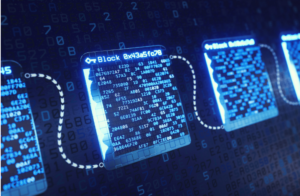 Well, there is more robust tech that you can use.
Well, there is more robust tech that you can use.